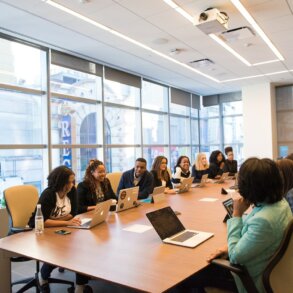By Pablo Aretxabala and published originally at k2kemocionando.com
Translated into English by Unai Gaztelu, Regional Correspondent to EE Magazine for the Basque country of Spain
Our 12-year experience at K2K with organizations has given us some clues on HOW to transform traditional organizations into People-Centered Organizations
- What does my gut say?
First things first: we, as human beings, are driven by our emotions. not by reason and logic; we act because we want to, not because we have to. Every action begins with a feeling, followed by a thought, and ends with the act itself. If we listen or read about “people-centered organizations” and our gut does not push us to act, we should rather wait until it does.
- Get informed, read, watch, check …
There are plenty of examples to look at out there. At Ner Group we have a Youtube channel and K2K shares dozens of their experiences in several free-to-download publications. There are plenty of examples; be curious, research and ask. The more you get to know them, the better.
- To want it
Truly. Decide to do it; be conscious about the decision and about the fact that it is what we really want to do.
- Share with others
If I work together with other people, it is not enough if I want to (regardless of my position in the organisation, even if I am the owner or director). Other colleagues must also want to and hence, they must go through steps 1 and 2.
- The decision to change is a collective decision, decided formally with the maximum legitimacy
The worst thing we could do is to try to become a people-centered organization and to ignore the people in the first place. The change process begins at the very beginning, when we give each and every person the freedom and the responsibility to formally decide.
- Identify the right leader
Either if we start from scratch or if we transform an existing reality, the construction of an alternative culture requires a clear, recognisable, motivated, and consistent leadership. Else, chances of getting dragged back by the dominant culture are too high.
- Do the journey together
United we stand, always, but when we swim against the dominant current this becomes essential. Share and check with others; learn from each other’s experiences; share our own experiences; know our fellow “travelers”. It´s all necessary for such a change.
- Be consistent
The most difficult part of change processes are not the beginnings but to keep on working. It is easy to sign up for the gym, not that easy to make it a routine. We will face countless doubts, problems, and obstacles, and we will not achieve a deep cultural transformation if we give up after the first difficulty.
- Check our guiding values continuously
In those moments of doubt, when problems arise and no easy solution is at hand, we need to make use of our guiding values, of our shared ethic that moves and guides us. That is key; else, we will unconsciously make use of the dominant, mainstream solutions.
- Enjoy the journey
This journey is not a process followed to reach any point; there is no finish line, no end point, just the journey itself, the process itself. Along the journey we will succeed, we will celebrate, but we cannot settle; we have to keep on walking, a people-centered organization is nomadic by nature.
Republished by permission of the author.
Featured Image/graphic link added by Enlivening Edge Magazine




